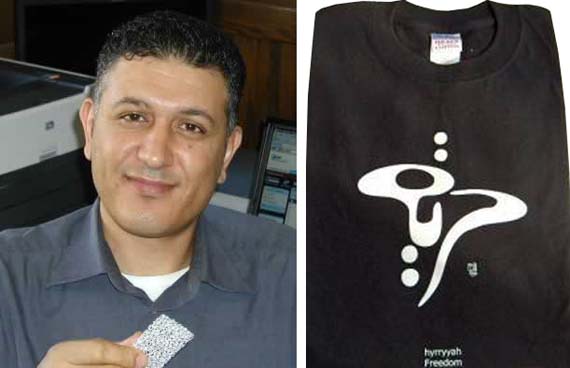Contemporary Arabic Calligraphy
Sep 25, 2010 Exhibition
Arabic calligraphy is considered to be the highest form of Islamic art. Muslims view Arabic in its Quranic form as the language through which God communicated his message to the Prophet Muhammad, and thus, as the holiest language. With this inherent reverence to the language, Arabic calligraphy has historically developed as a central art form with a highly decorative purpose.
Though not explicitly prohibited in the Quran, figural representation is generally not practiced in Islamic art, and calligraphy often stands in for figural depictions and decorations. In this role, Arabic calligraphy takes on a multiplicity of ornamental forms and different classical styles and scripts, offering the calligrapher a flexibility in method and approach that allows for compelling artistic expressions of the Islamic spirit.

While Dukhan learned the classical styles under master calligraphers, his own designs depict verses from the Quran, as well as words and phrases, like diversity, solidarity, and freedom, that do not conform to the rules of classical Arabic calligraphy. Dukhan describes his work as “emptying the letters of their original written form while retaining their movement and essence, and ultimately using them to pursue other organic forms.â€
To provide a post-modern interpretation of Arabic letters, Dukhan has created the contemporary designs in this exhibition using classical styles as the basis for an abstract yet readable representation of words.
Nihad Dukhan was born in 1964 in central Gaza, Palestine. He immigrated to Toledo, Ohio, in 1983, and earned his PhD in mechanical engineering from the University of Toledo in 1996. He worked in Chicago and at the University of Puerto Rico before assuming his current position as an associate professor of mechanical engineering at the University of Detroit Mercy.
Dukhan’s interest in Arabic calligraphy began when he was a child. After training in the classical styles, he became a student of the noted Istanbul grand master calligrapher Hasan Celebi, from whom he learned the Thuluth and Naskh styles. After 11 years of study, he earned his Ijazah (master of calligraphy degree). He then continued his training and became a student of the Taliq style under master calligrapher Mohamed Zakariya.
Dukhan is active in promoting Arabic calligraphy and increasing awareness of its cultural significance through exhibitions, lectures, and workshops. His intent is not only to attract an Arabic-speaking audience, but also to break through barriers and reach other cultures.
Source: http://blogs.luc.edu/artsalive/2010/09/24/contemporary-arabic-calligraphy-comes-to-the-loyola-university-museum-of-art/
Photos: © Copyright Nihad Dukhan
Comments
Oct 21, 2011 - 10:20:06
Nice work. Good organic calligraphy on shirts. I think many people like these designs. Thanks for presenting.
Add a comment
Commenting is not available in this section entry.